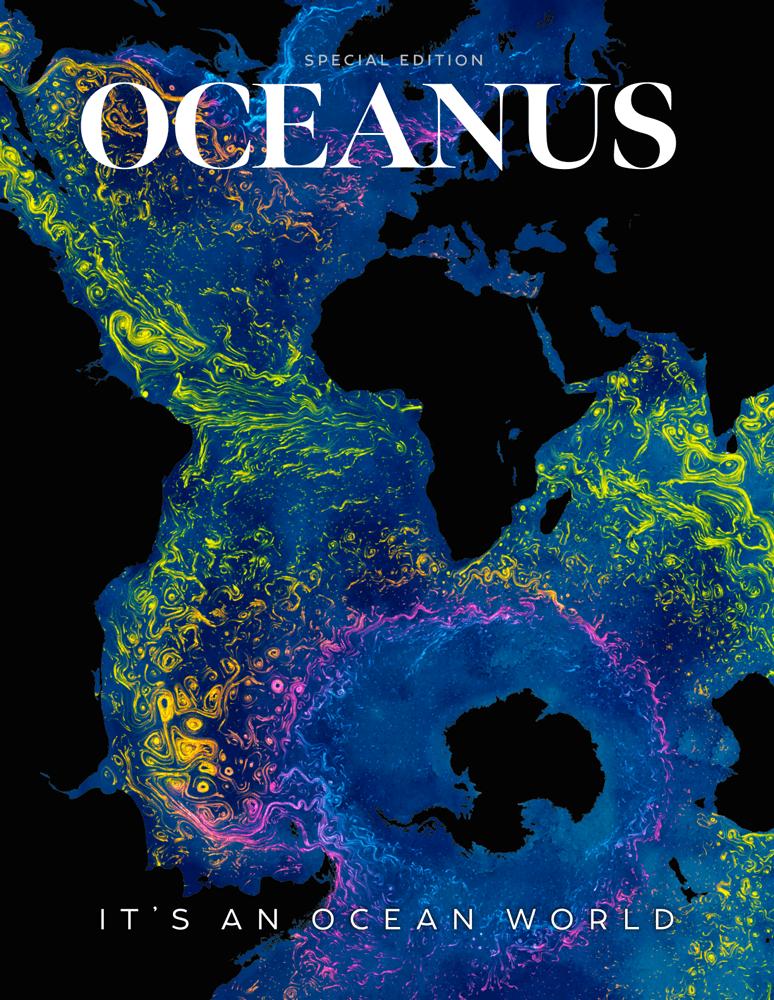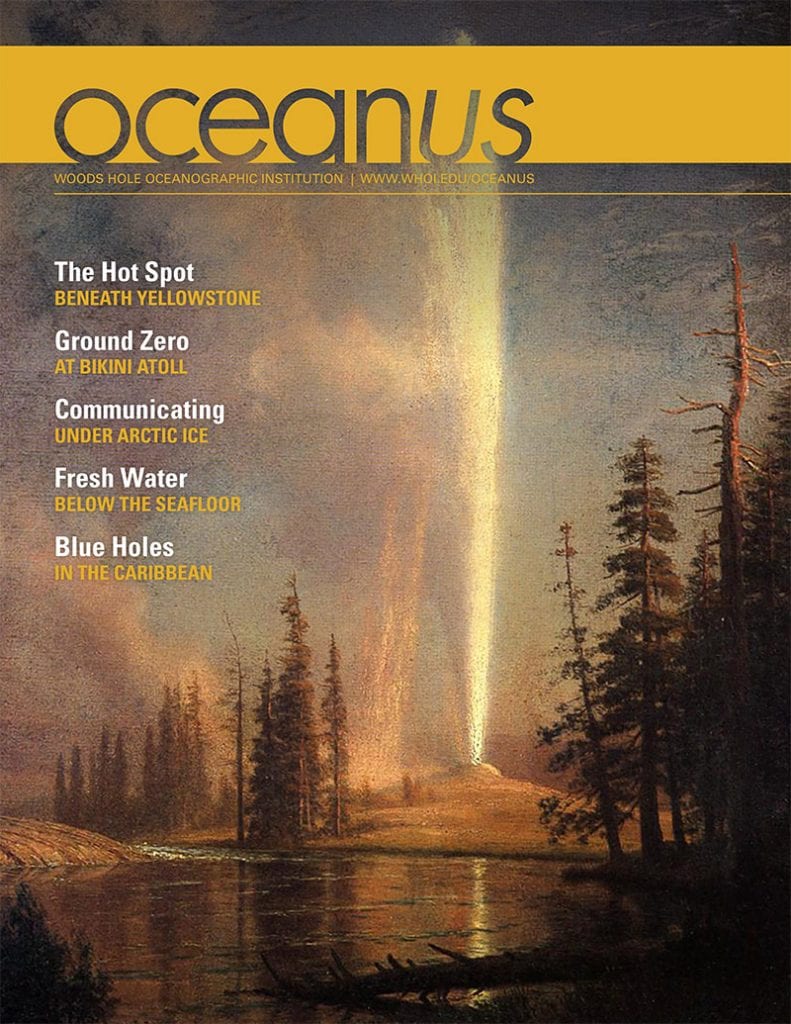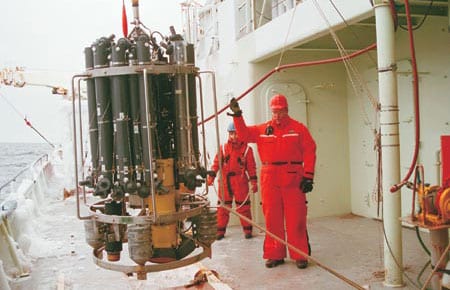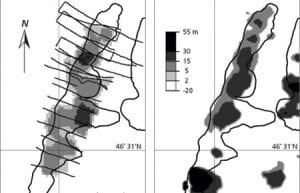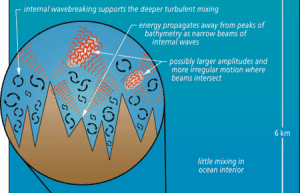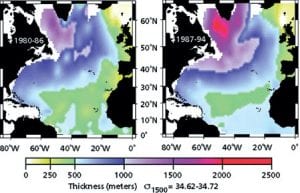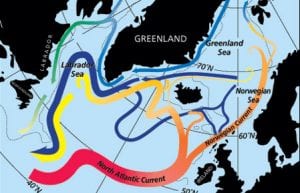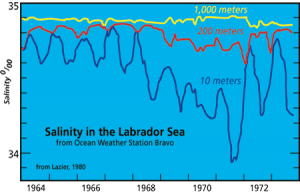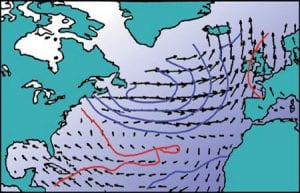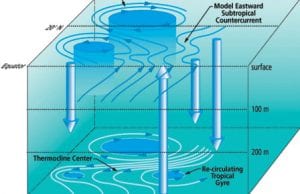How the Ocean Works
Adventure in the Labrador Sea
The sound of the general alarm bell reverberated through the ship. At 2:30 AM, this couldn’t be a drill. Even more puzzling, we were still dockside in Halifax, four hours from our scheduled departure for the Labrador Sea.
The Magnetic Thickness of a Recent Submarine Lava Flow
Submarine lava flows and their associated narrow feeder conduits known as dikes constitute the basic…
New Data on Deep Sea Turbulence Shed Light on Vertical Mixing
The global thermohaline circulation is basically a wholesale vertical overturning of the sea, driven by…
Labrador Sea Water Carries Northern Climate Signal South
Changes in wind strength, humidity, and temperature over the ocean affect rates of evaporation, precipitation,…
If Rain Falls on the OceanDoes It Make a Sound?
As with similar questions about a tree in the forest or a grain of sand…
A Century of North Atlantic Data Indicates Interdecadal Change
For hundreds of years mariners have recorded the weather over the world ocean. Some 100…
The El Niño/Southern Oscillation Phenomenon
The El Niño/Southern Oscillation (ENSO) phenomenon, an eastward shift of warm water in the tropical…
